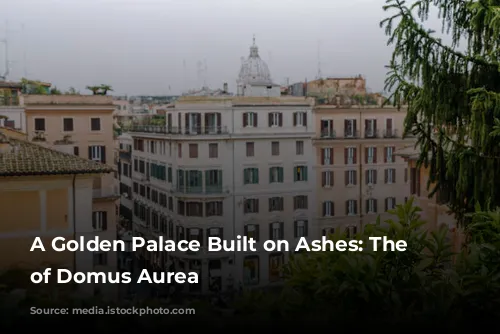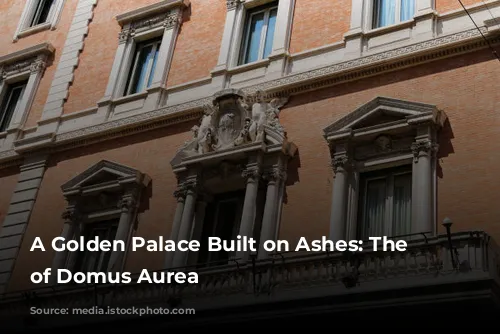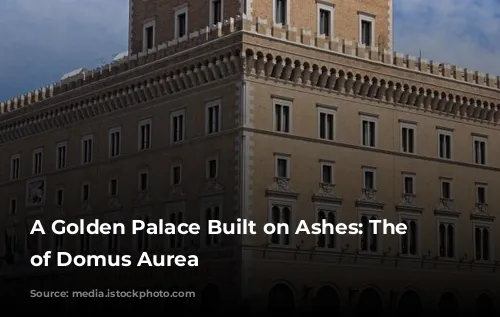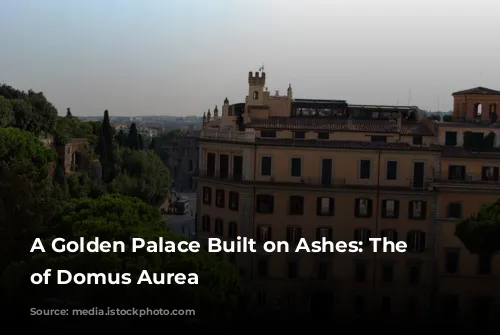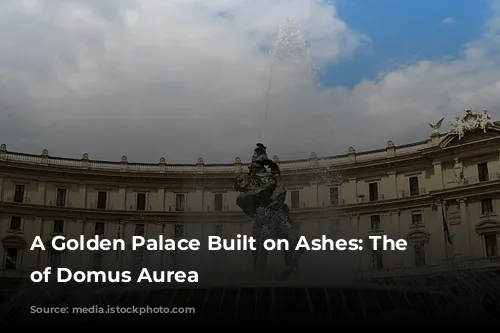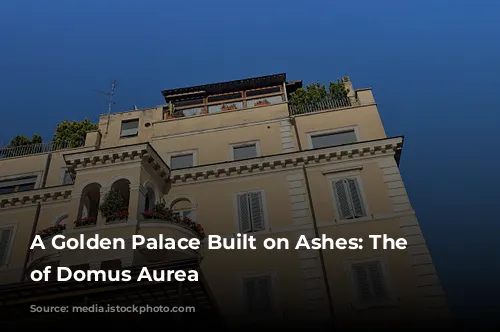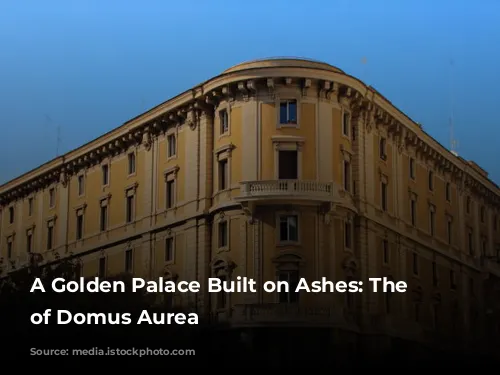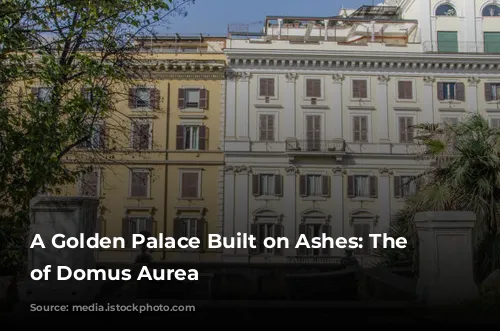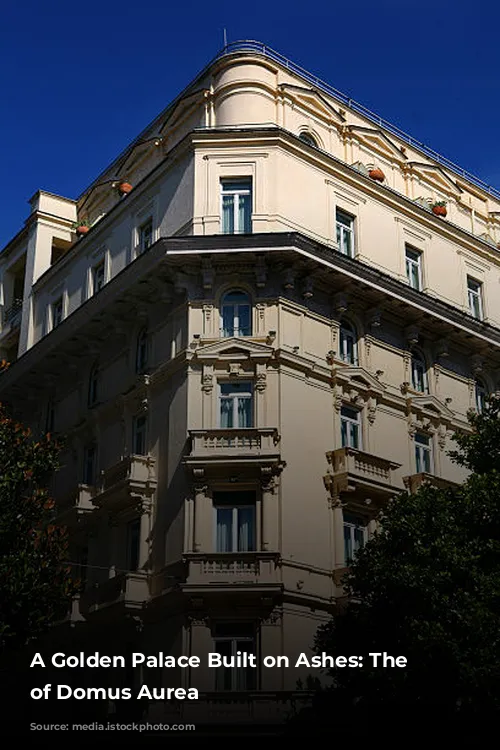Introduction:
The Domus Aurea, or the Golden House, is a testament to the extravagance and ambition of Roman Emperor Nero. This palace, built after the Great Fire of Rome, was a symbol of Nero’s power and a source of resentment for his successors. The Domus Aurea is more than just a historical monument; it’s a glimpse into the life of a complex and controversial emperor.
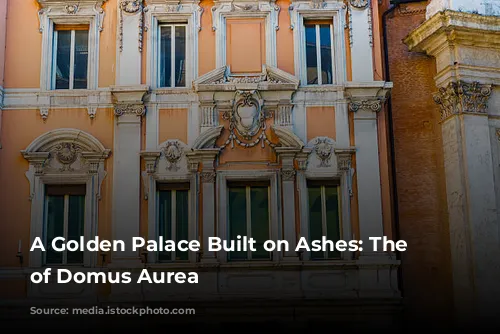
The Rise and Fall of Nero’s Golden House
A Palace of Unparalleled Opulence:
The Domus Aurea was built on a grand scale, occupying a third of Ancient Rome, a space 25 times larger than the Colosseum. It was a sprawling complex with breathtaking features: majestic arcades, an artificial lake, groves of trees, and exotic animals. Imagine a sprawling, opulent space filled with gold-leafed frescoes, intricate stucco ceilings, and statues of Greek gods. The sheer opulence and artistic mastery of the Domus Aurea left Renaissance artists in awe when it was rediscovered centuries later. The name “Golden House” was indeed fitting, reflecting the lavish use of gold throughout the palace.
A Legacy of Debauchery and Erasure:
Nero’s reign was marked by extravagance and excess, and his successors were determined to erase his legacy. The Domus Aurea became a symbol of his debauchery, and they worked tirelessly to dismantle and bury the complex. The artificial lake was drained, the grounds were repurposed for public baths, and the Colosseum was built on its former site. Even the Temple of Venus was erected on the site of the palace’s grand vestibule.
Rediscovering a Lost Masterpiece:
For centuries, the Domus Aurea remained hidden, buried beneath the layers of time. Its rediscovery in the 15th century brought renewed fascination with the artistic achievements of Ancient Rome. The intricate frescoes within the caverns of the palace inspired Renaissance artists like Michelangelo and Raphael.
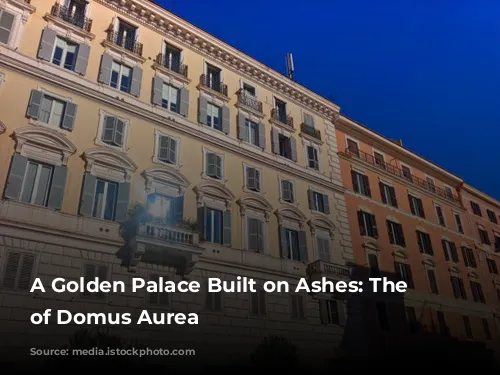
Beyond the Frescoes: A Glimpse into Nero’s World
The Art and Architecture of a Tyrant:
The Domus Aurea was not simply a palace; it was a showcase of Roman artistic genius. The palace incorporated the Pompeian Styles of decoration, with vibrant colors and floral motifs, and housed magnificent Greek statues. The Octagonal Hall, with its open dome and intricate decorations, showcased innovative use of concrete and architectural design.
The Birth of “Grotesque”:
The “grotesque” style, born within the caverns of the Domus Aurea, emerged as a unique form of decorative art during the Renaissance. The intricate murals and designs found within the palace inspired a generation of artists, demonstrating the lasting impact of Nero’s architectural vision.
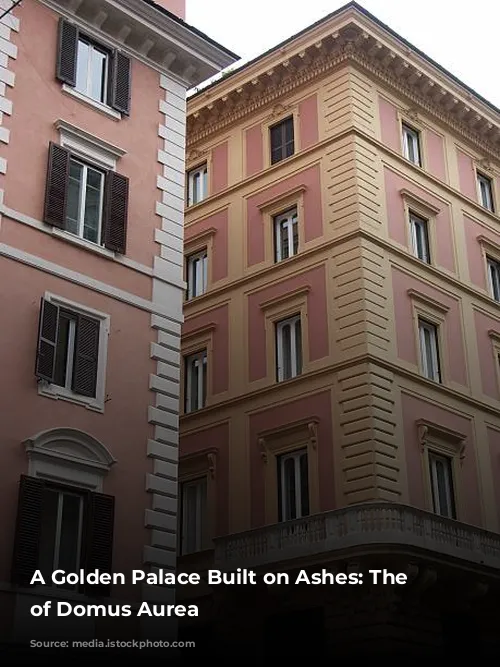
A Shadow of Controversy: The Reign of Emperor Nero
The Rise and Fall of a Young Emperor:
Nero, a young man thrust onto the throne at the age of 16, was more interested in the arts and pleasures of life than in the responsibilities of governing. His early reign was marked by relative peace and prosperity, guided by his tutor, the Stoic philosopher Seneca. However, Nero’s obsession with lavish spending and his reckless love for Poppaea Sabina quickly turned his reign into a tumultuous chapter in Roman history.
Murder, Intrigue, and Deification:
Poppaea, fueled by ambition, convinced Nero to murder his mother, Agrippina, and to divorce and eventually kill his first wife, Claudia Octavia. Nero’s reign was filled with conspiracies, betrayals, and violence. He declared himself a living god, mirroring the excesses of his predecessor, Caligula, and ruled with an iron fist.
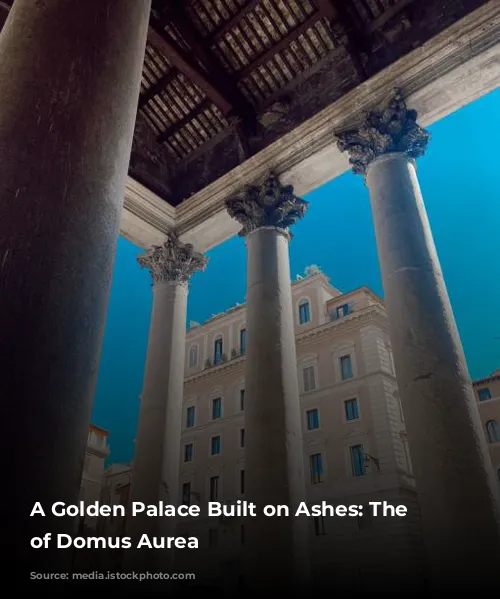
The Great Fire of Rome: Accidental Disaster or Calculated Plot?
A City in Flames:
The Great Fire of Rome, a devastating blaze that consumed two-thirds of the city, left a lasting scar on the Roman Empire. While Nero was initially praised for his leadership in organizing relief efforts, suspicion soon arose that he had orchestrated the fire himself.
Persecution of the Christians:
The fire provided Nero with a convenient scapegoat: the early Christian community. Accused of starting the fire, Christians were subjected to gruesome executions, becoming victims of Nero’s rage.
Building a Palace on Ashes:
The fire allowed Nero to rebuild the city centre according to his grandiose vision, paving the way for the construction of the Domus Aurea. Though Nero’s lavish palace was a testament to his extravagant ambition, it was a short-lived dream, only enjoyed for a few months before the emperor’s downfall.
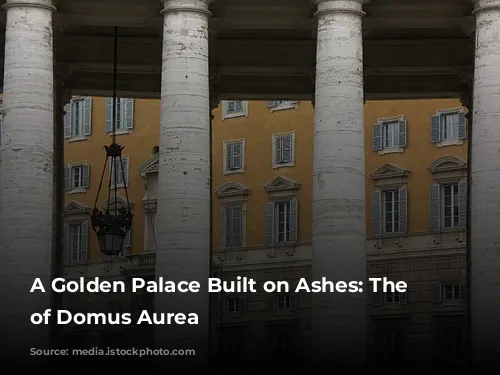
The End of a Dynasty: The Fall of Nero
Rebellion and Execution:
Nero’s cruelty and tyranny eventually led to rebellion. The governors of Hispania and Gaul, supported by the Senate, revolted against his rule. The Senate condemned Nero as a public enemy and ordered his execution.
A Legacy of Excess and Intrigue:
Nero, driven by fear, committed suicide at the age of 30. His death marked the end of the Julio-Claudian dynasty, a period of intense political intrigue, extravagant displays of wealth, and ultimately, the downfall of a once-mighty empire. The Domus Aurea, a symbol of Nero’s ambition and excess, stands as a poignant reminder of the transient nature of power and the enduring allure of a bygone era.
